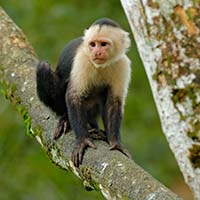
Monkey pox is not a new disease, with several thousand cases reported each year in Africa. It was originally discovered in a colony of monkeys in 1958, but it likely originates in rodents. It spreads between people through contact with bodily fluids, open sores/skin lesions, and from coughing through large droplets that fall to the ground.
In this regard, it is unlike COVID where lighter aerosol particles may remain air bound for minutes. As a result, Monkey pox is much less contagious. While it can occasionally cause serious illness, most cases are mild. It generally starts with flu like symptoms including fever, headache, and swelling of lymph glands. Within several days, a rash consisting of flat lesions that evolve into pus -filled bumps develops. It typically start s on the face and spreads to other parts of the body and may involve the genitals. These symptoms usually take several weeks to resolve. The virus that causes Monkey pox is related to smallpox and is prevented by the same vaccine, which can also treat an infection if administered promptly.


